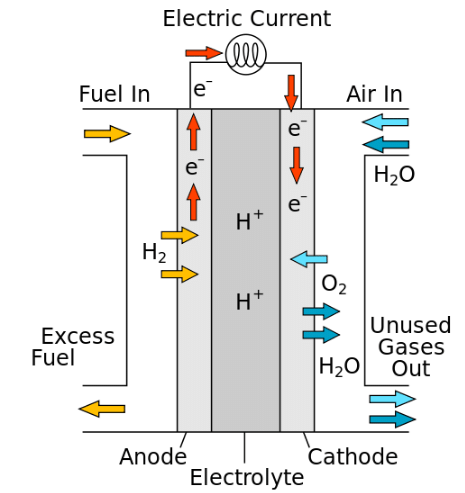UPSC Exam > UPSC Notes > PIB (Press Information Bureau) Summary > PIB Summary- 22th August, 2022
PIB Summary- 22th August, 2022 | PIB (Press Information Bureau) Summary - UPSC PDF Download
First truly indigenously developed Hydrogen Fuel Cell Bus launched
Why in News?
Union Minister Dr Jitendra Singh unveils India’s first truly indigenously developed Hydrogen Fuel Cell Bus developed by KPIT-CSIR in Pune.
Details
- The launch is in tune with India’s National Green Hydrogen Mission.
- About 12-14% CO2 emissions and particulate emissions come from diesel powered heavy commercial vehicles and these are decentralised emissions and hence difficult to capture.
- The fuel cell utilizes Hydrogen and Air to generate electricity to power the bus and the only effluent from the bus is water, thus making it possibly the most environmentally friendly mode of transportation.
- The high efficiency of fuel cell vehicles ensures lower operational costs per kilometre than diesel powered vehicles
What is a Hydrogen Fuel Cell and how does it work?
- A fuel cell is an electrochemical cell that converts the chemical energy of a fuel (often hydrogen in the case of Hydrogen Fuel Cell) and an oxidizing agent (often oxygen) into electricity through a pair of redox reactions.
- A Fuel Cell consists of an anode, a cathode, and an electrolyte that allows ions, often positively charged hydrogen ions (protons), to move between the two sides of the fuel cell.
- A fuel cell converts chemical potential energy (energy stored in molecular bonds) into electrical energy.
- A PEM (Proton Exchange Membrane) cell uses hydrogen gas (H2) and oxygen gas (O2) as fuel.
- The products of the reaction in the cell are water, electricity, and heat.
- This is a big improvement over internal combustion engines, coal burning power plants, and nuclear power plants, all of which produce harmful by-products.
- Since O2 is readily available in the atmosphere, we only need to supply the fuel cell with H2 which can come from an electrolysis process (see Alkaline electrolysis or PEM electrolysis).
How are they different from conventional Batteries?
Fuel cells are different from most batteries in requiring a continuous source of fuel and oxygen (usually from air) to sustain the chemical reaction, whereas in a battery the chemical energy usually comes from metals and their ions or oxides that are commonly already present in the battery.
Fuel cells can produce electricity continuously for as long as fuel and oxygen are supplied.
Advantages of the Hydrogen Fuel Cell technology
- By converting chemical potential energy directly into electrical energy, fuel cells avoid the “thermal bottleneck” (a consequence of the 2nd law of thermodynamics) and are thus inherently more efficient than combustion engines, which must first convert chemical potential energy into heat, and then mechanical work.
- Direct emissions from a fuel cell vehicle are just water and a little heat. This is a huge improvement over the internal combustion engine’s litany of greenhouse gases.
- Fuel cells have no moving parts. They are thus much more reliable than traditional engines.
- Hydrogen can be produced in an environmentally friendly manner, while oil extraction and refining is very damaging.
Grameen Udyami Project
Why in News?
Grameen Udyami Project launched in Ranchi to promote skill development and Entrepreneurship amongst the tribal youth.
Details
- The National Skill Development Corporation (NSDC) in partnership with Seva Bharti and Yuva Vikas Society launched the second phase of Grameen Udyami Project in Jharkhand.
- Under the initiative, the endeavour is to multiskill India’s youth and impart functional skills to them for enabling livelihoods.
- The project emphasised on the involvement of tribal communities in the workforce, ensuring their holistic development to make them self-reliant and contained within their respective geographies.
- The project gives boost to Skill India Mission
About Grameen Udyami Project
- Grameen Udyami is a unique multiskilling project, funded by NSDC that aims to train 450 tribal students in Madhya Pradesh and Jharkhand.
- The project is being implemented in six states— Maharashtra, Rajasthan, Chhattisgarh, Madhya Pradesh, Jharkhand, and Gujarat.
- Objectives:
- Increase in Rural/Local Economy
- Enhance employment opportunities
- Reduce forced migration due to lack of local opportunities
- Conservation of natural resources
- The training under the project will be conducted in the following Job roles which are relevant to the local economy.
- Electrician & Solar PV Installation Technician
- Plumbing & Masonry
- 2-Wheeler Repair & Maintenance
- IT/ITES with e-Governance
- Farm Mechanization
- The project is implemented under Sansadiya Parisankul Yojana.
The document PIB Summary- 22th August, 2022 | PIB (Press Information Bureau) Summary - UPSC is a part of the UPSC Course PIB (Press Information Bureau) Summary.
All you need of UPSC at this link: UPSC
Related Searches

















